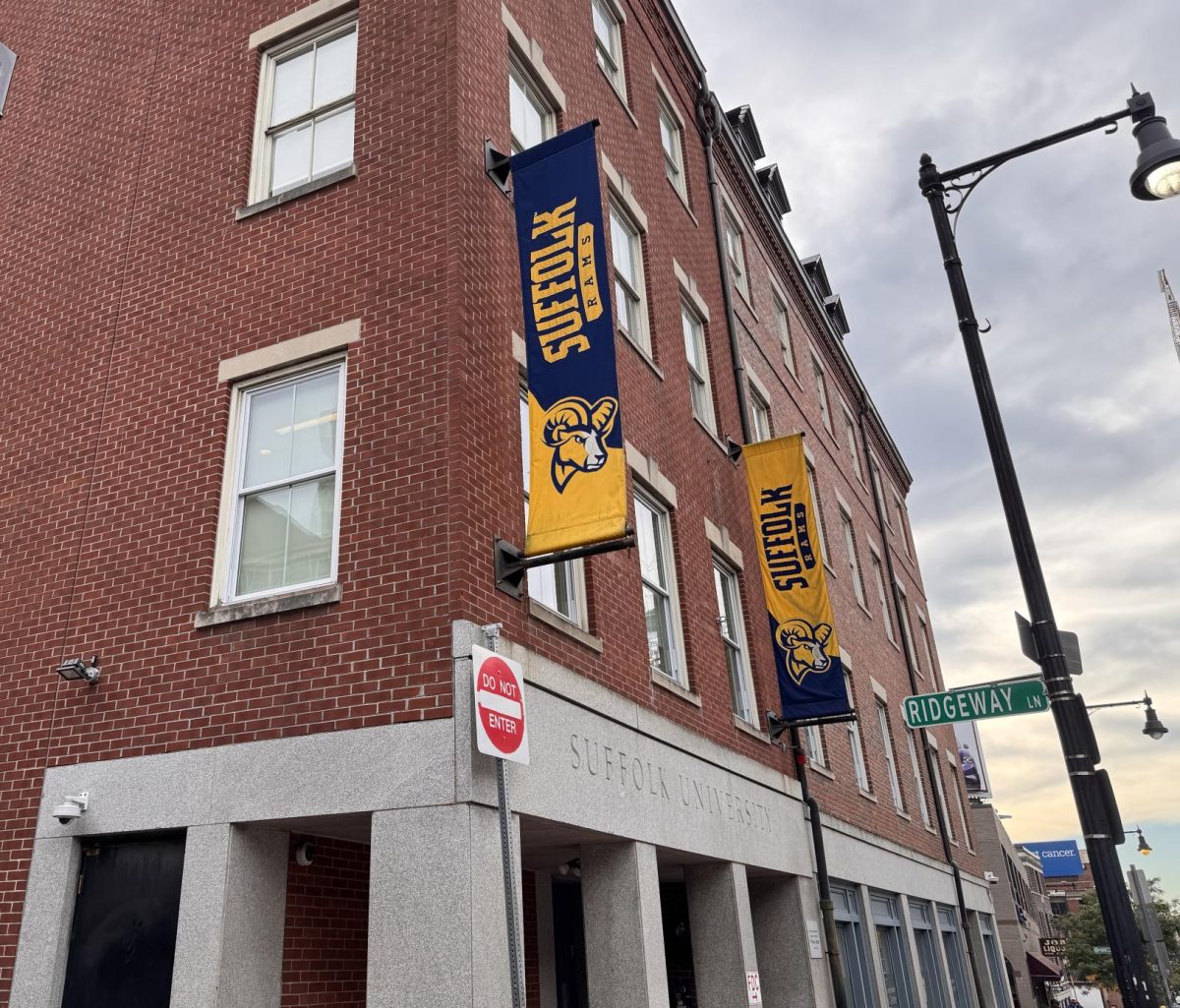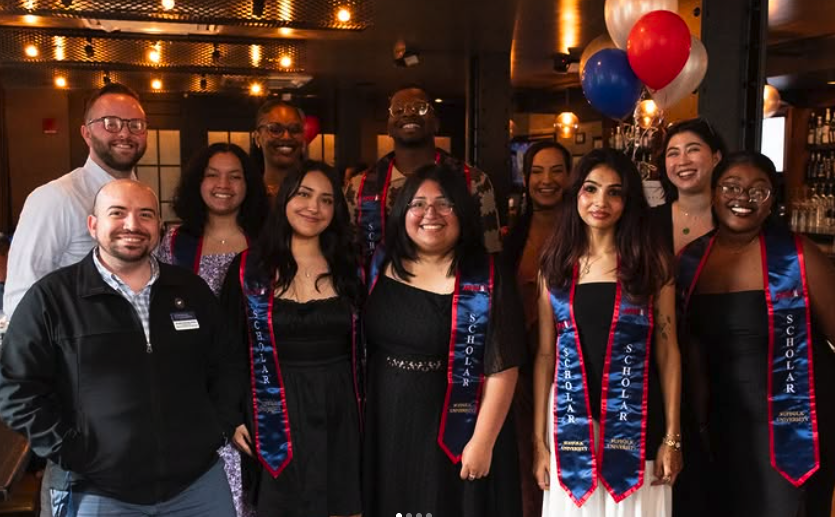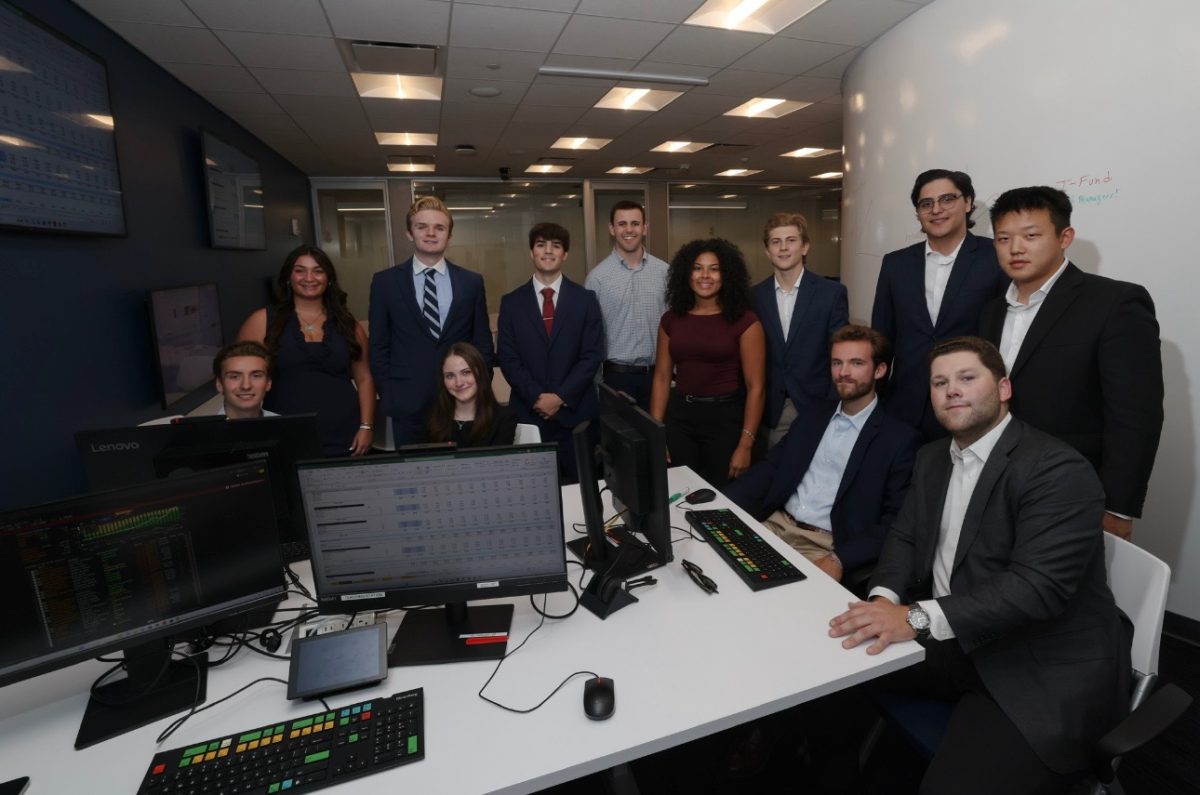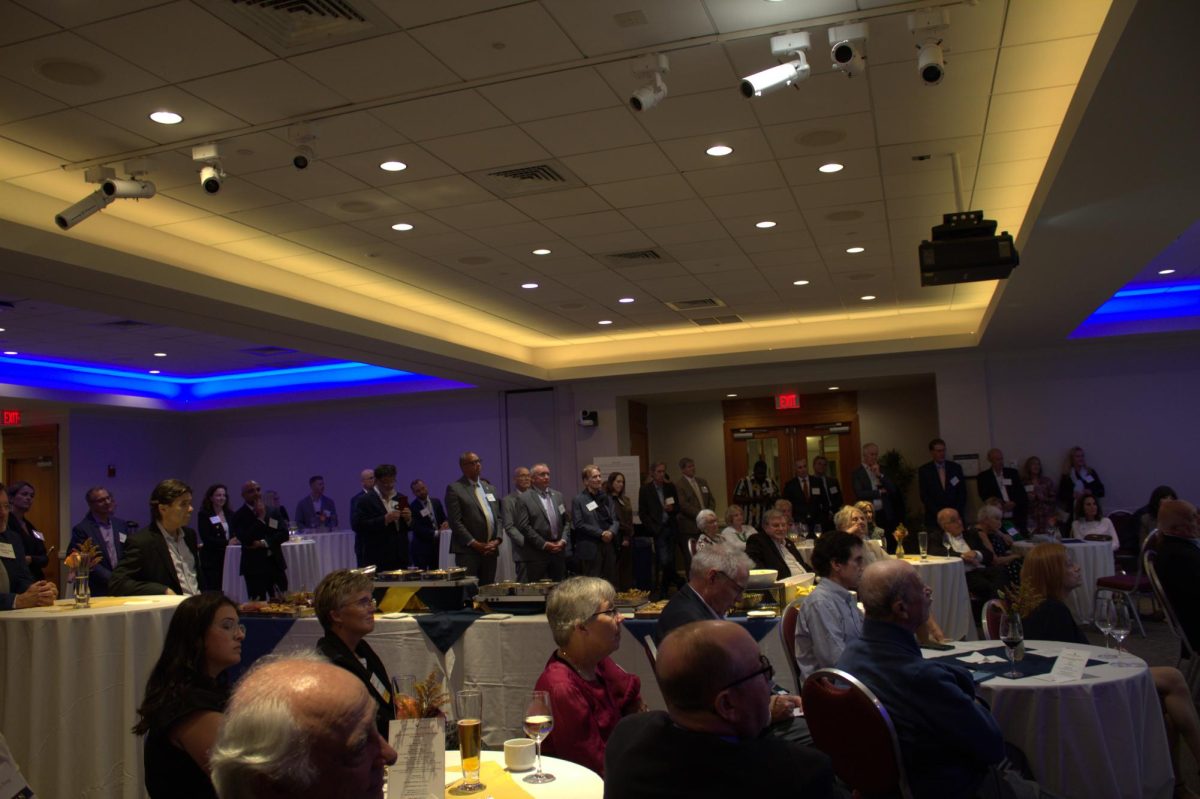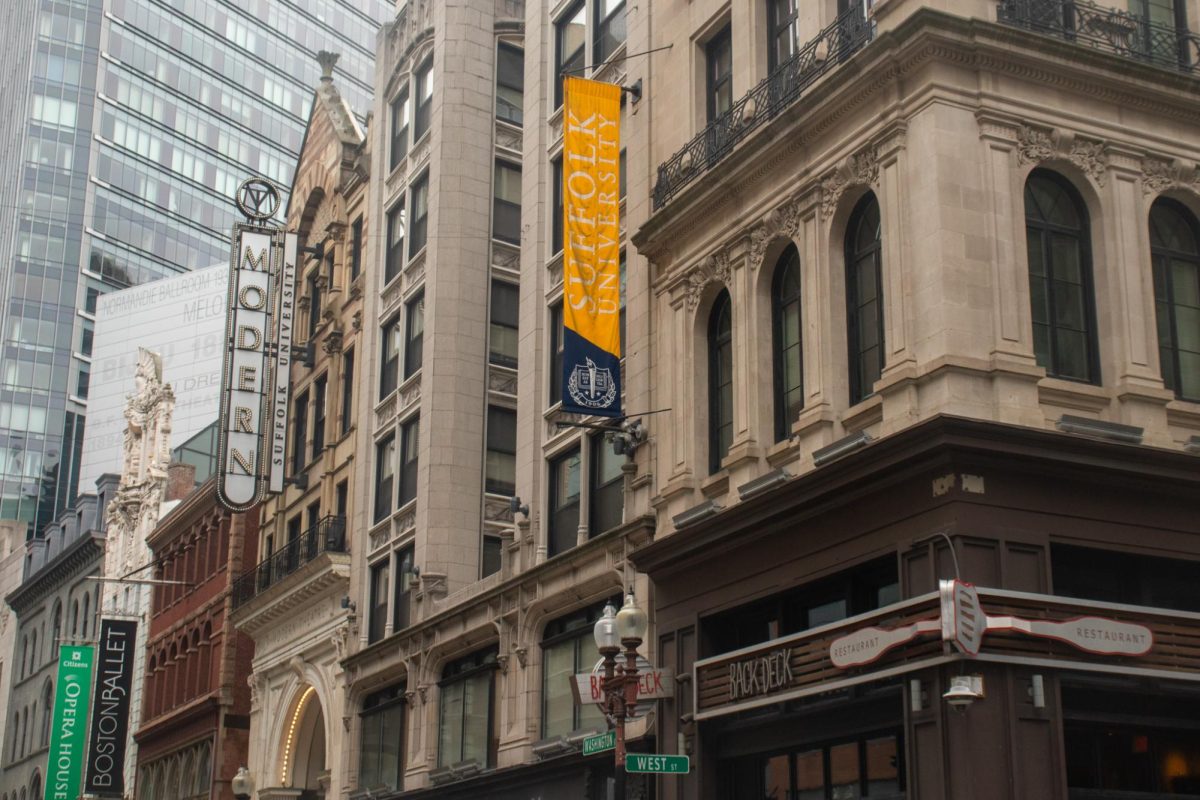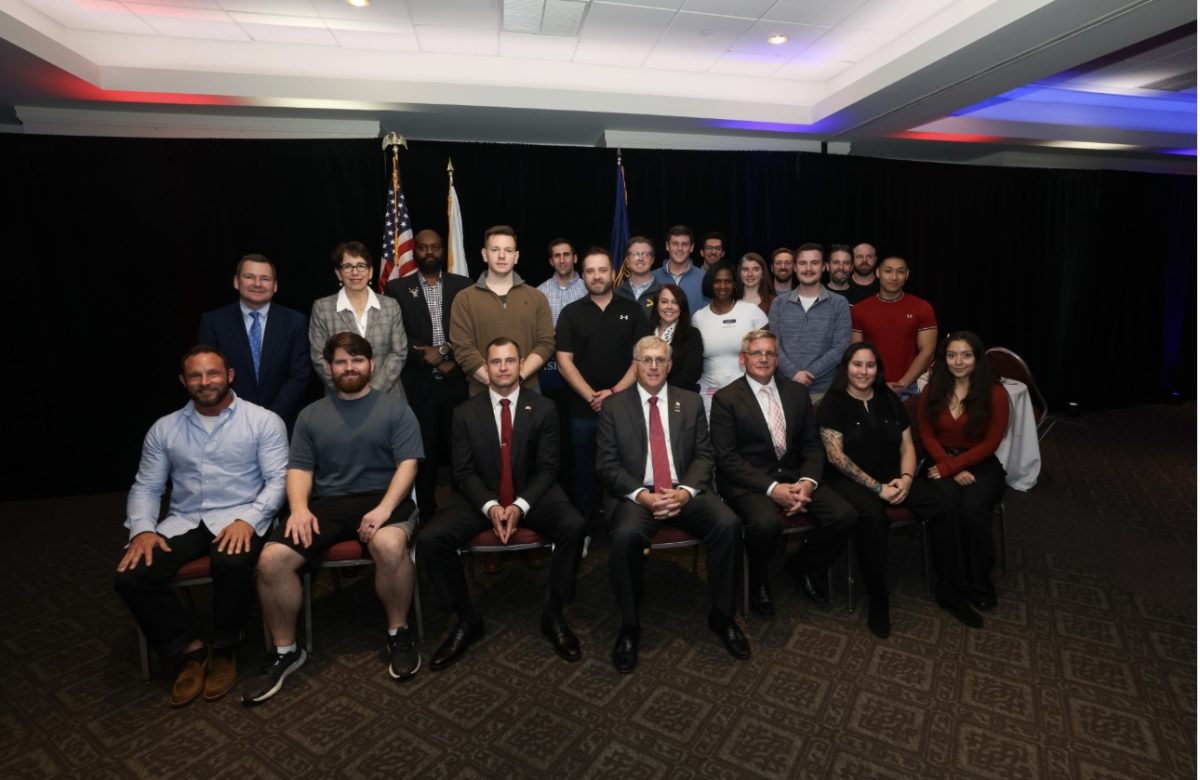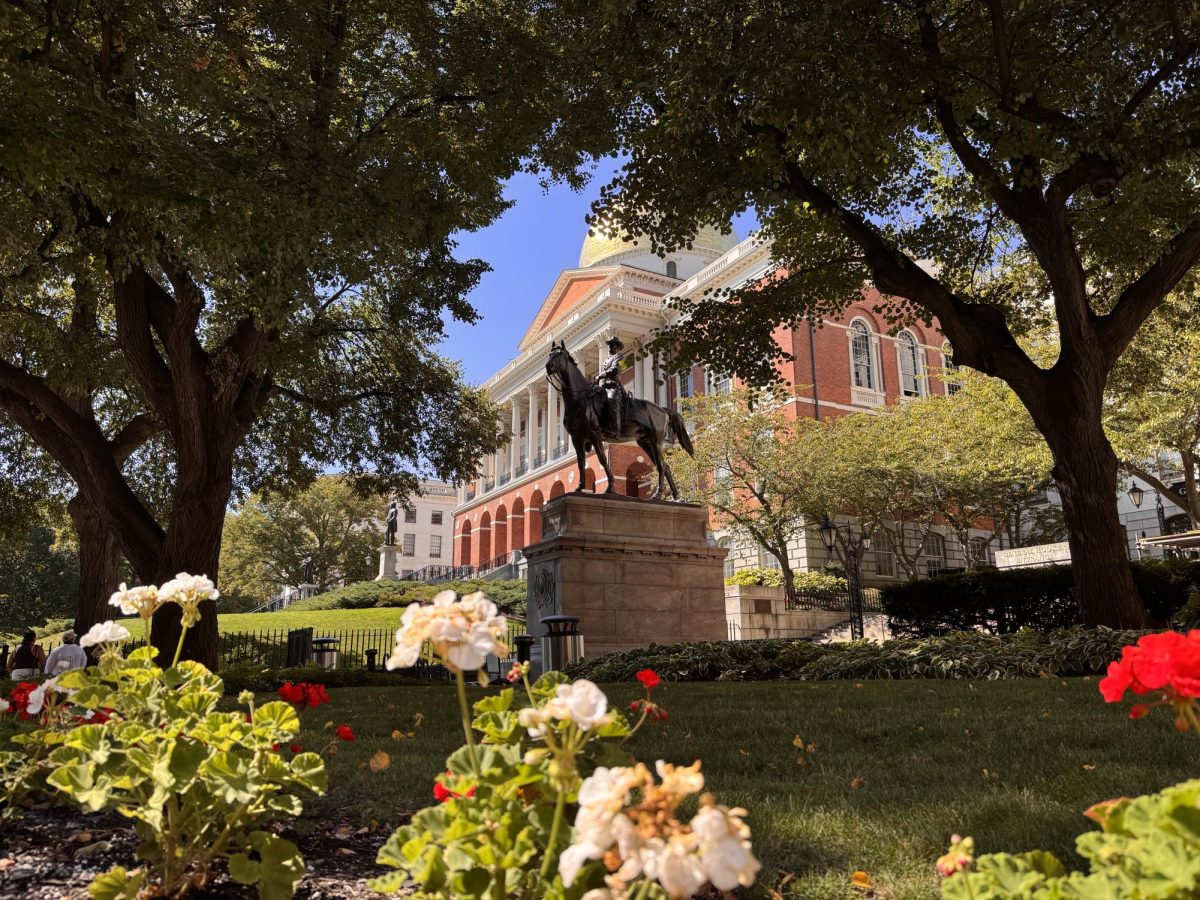Former Harvard football player and World Wrestling Entertainment wrestler Chris Nowinski surprised student athletes Tuesday afternoon as they filled into the C. Walsh Theater to get head-ucated, a lesson about concussions and how to deal with them.
The main point of the Headucation seminar, presented by Suffolk Athletics, was to promote the reality of how concussions affect athletes and what actions to take when dealing with a concussion. Nowinski stated the five ways to protect yourself, which included to report immediately when you have a concussion, help teammates out if you suspect they have a concussion, be honest about your symptoms, manage the risk and recovery time, and work on neck and core strengths.
Hosting the seminar was Suffolk sophomore hockey player Brett Roman, who spoke briefly before introducing the main event of the afternoon. Roman urged student athletes in attendance to take Nowinski’s words seriously because concussions affect athletes of all types, not just contact sport players.
“I feel like that we’re making good strides to raise awareness,” Roman said.
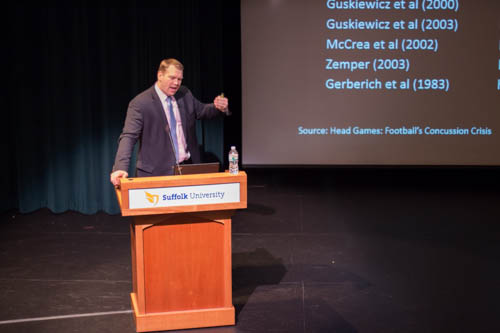
Roman also noted during the event that Suffolk offers a lot of help for student athletes dealing with concussions, such as tutor programs and offices. At the start of next semester, Suffolk plans to take concussed students’ needs more seriously, by introducing tutors to watch students with concussions, checking up on them to make sure that their education does not suffer.
“We put a lot of money into our education, and we don’t want to waste that if we’re injured,” Roman said.
As an introduction, Suffolk athletic trainer Jeff Stone spoke about the afternoon’s agenda to educate student athletes about the concerns and reality of concussions.
“All concussions are not the same,” Stone said. “No two athletes react the same to a concussion.”
As Nowinski took the stage, he promoted his book, “Head Games,” about the concussion crisis in sports on the rise and how to protect athletes.
“We don’t value the information about concussions,” Nowinski added before starting his presentation, which was about defining concussions, why they are important to not overlook, and what to do about them.
A major component of his presentation was to show the audience some of the reasons why he is dedicated to concussion and chronic traumatic encephalopathy, or CTE. These reasons were noted through some of the highlights of Nowinksi’s WWE days, clips of him getting his head bashed into the ring floor, for the sake of entertainment. As he joked, saying that the WWE is fake, he said the injuries were all real.
“After the fight, everyone kept asking me, ‘Are you sure you’re okay?’ and I just said the typical thing, ‘Yeah, I’m fine.’” Nowinski said. He continued to enter the ring every night for the next five weeks, thinking that he only had the flu. “I didn’t get better,” he recalled.
Showing the audience brain scans of athletes who had passed through the hands of suicide influenced by CTE opened the eyes of most of the athletes to the reality of concussions.
“You can’t see the symptoms of a concussion. You don’t bleed out your eyes and say ‘Hey coach, I’ve got a concussion,” Nowinski said.
After Nowinski’s lecture, he held a short question and answer session. The first 150 students in attendance were given a free T-shirt and wristband to promote concussion cause awareness. If students need support, there are multiple options to reach, including the Balotti Learning Center, Student Affairs, and the Office of Disability Serivces, located in 73 Tremont.


